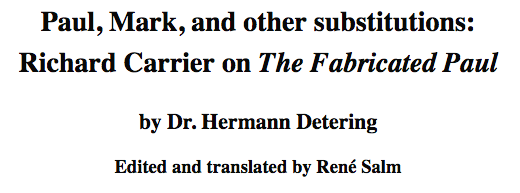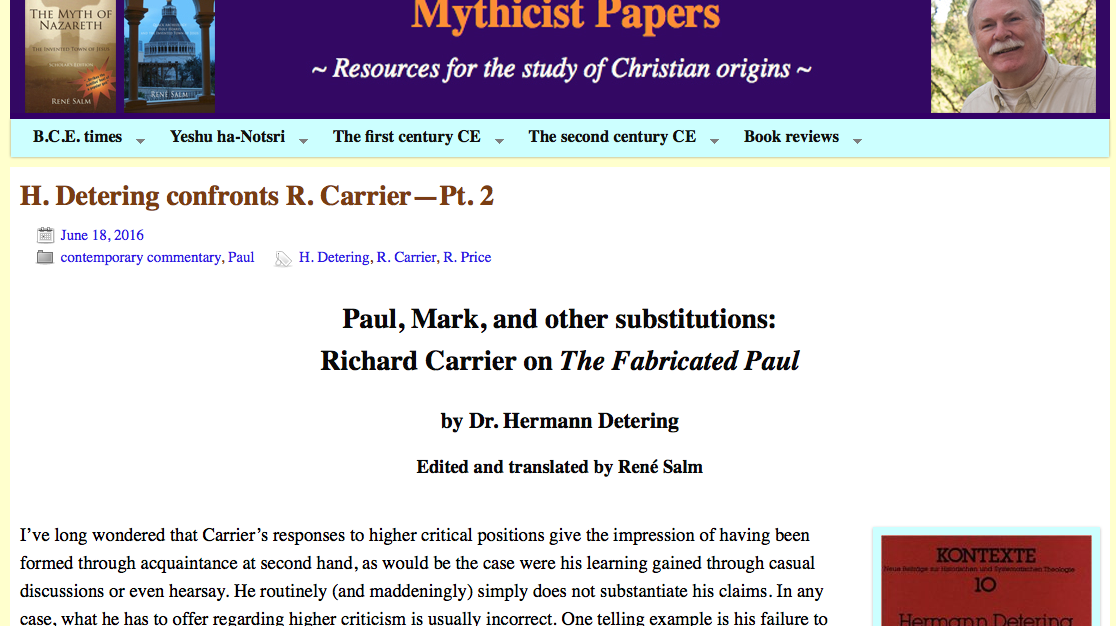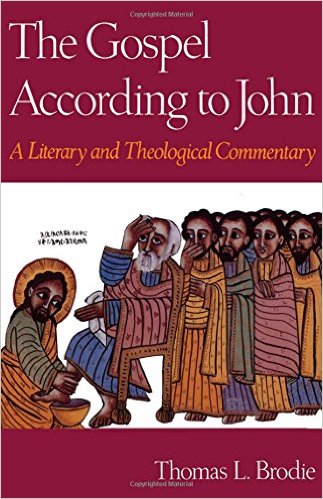Horsley, Richard A. Jesus and the Politics of Roman Palestine. Columbia, SC: University of South Carolina Press, 2013, 9.

What is the context of that comment? Distinguished Professor Richard Horsley is talking about the practice of Jesus scholars to take individual sayings out of the gospels and attempting to “excavate” their origins instead of studying the gospels as literary works.
One of the first and most basic responsibilities of historians is to critically assess the character of their sources. Literary and rhetorical analysis of the sources is necessary to discern how they may be used for investigation of historical events, actors, and circumstances. Historians would not separate individual statements or short anecdotes from a source, categorize them by key words or apparent subject matter, and then seek the meaning of each statement by itself or assess the likelihood that particular anecdotes provide reliable attestation of actual historical incidents. (p. 9)
Historical Jesus scholars are very well aware that the Gospel are not regular histories but documents composed for the purpose of promoting faith in a wonder-working and resurrected Jesus. They therefore work with the assumption that if they extract certain pieces from such documents and subject them to “historical tests” they can arrive at some approximation of the “real historical Jesus”.
Jesus scholars recognize the “rhetorical” perspective of the Gospels. But precisely because the Gospels express the Easter faith of the “early Christians,” these scholars attempted to cut through or move underneath them by focusing on individual sayings (and stories) as their sources (or “data”), thus treating the Gospels as mere containers or collections. Work in other sub-fields of New Testament studies and related fields, however, is making this view of the Gospels untenable. (p. 9)
Horsley explains the process on the preceding page:
[T]he meaning of a saying depends on its meaning context, from which it cannot be intelligibly isolated. By extracting the sayings of Jesus from their literary context, Jesus scholars dispense with the only indication available for what that meaning context may have been. The analogy drawn recently that scholars are “excavating” the Gospel sources for Jesus such as Q or even “excavating Jesus” may be more telling than they realize. This suggests that the sayings are precious artifacts that must be excavated from the piles of dirt and debris in which they have become buried. Then, like museum curators of a generation or two ago, interpreters of Jesus arrange those decontextualized artifacts by type (“apocalyptic” or “sapiential”) and/or topic (children, meals, kingdom, wisdom), like fragments of lamps, vases, and pots in museum cases. Individual sayings of Jesus may be precious artifacts to the scholars who sort them out and categorize them. As isolated artifacts, however, they do not have or convey meaning, and they beg the question of context. The result is Jesus as a dehistoricized “talking head,” devoid of life circumstances.
With their various “databases” of atomized Jesus sayings isolated from any meaning context, the Jesus scholars then supply the meaning context themselves, often from the constructs of New Testament studies. It has become standard among critical liberal scholars, for example, to isolate Jesus’s admonition on what (not) to take for a/the journey from its immediate context in the “mission discourses” in both Mark 6:8-13 and Q/Lk 10:2-16. But what can this isolated saying about staff, sandals, bag, and so on mean in itself? Evidently nothing. So liberal interpreters recontextualize the saying in the modern scholarly construct of an itinerant vagabond lifestyle that Jesus was supposedly advocating to his individual disciples. (p. 8)
It is no different with scholars who work with memory theory in an attempt to reach back to the supposedly earliest “interpreted saying”.
I’ve addressed this point several times before — see, for example, Gospels As Historical Sources: How Literary Criticism Changes Everything — so it is interesting, even encouraging, to see the same point being made by one of the more prominent biblical scholars today.











